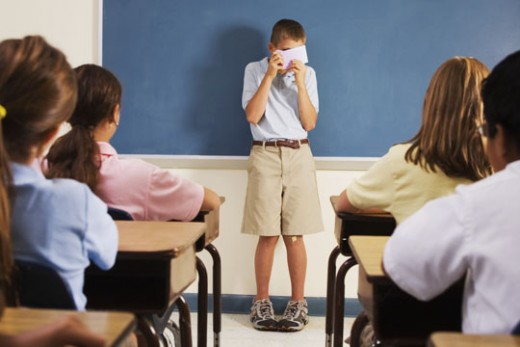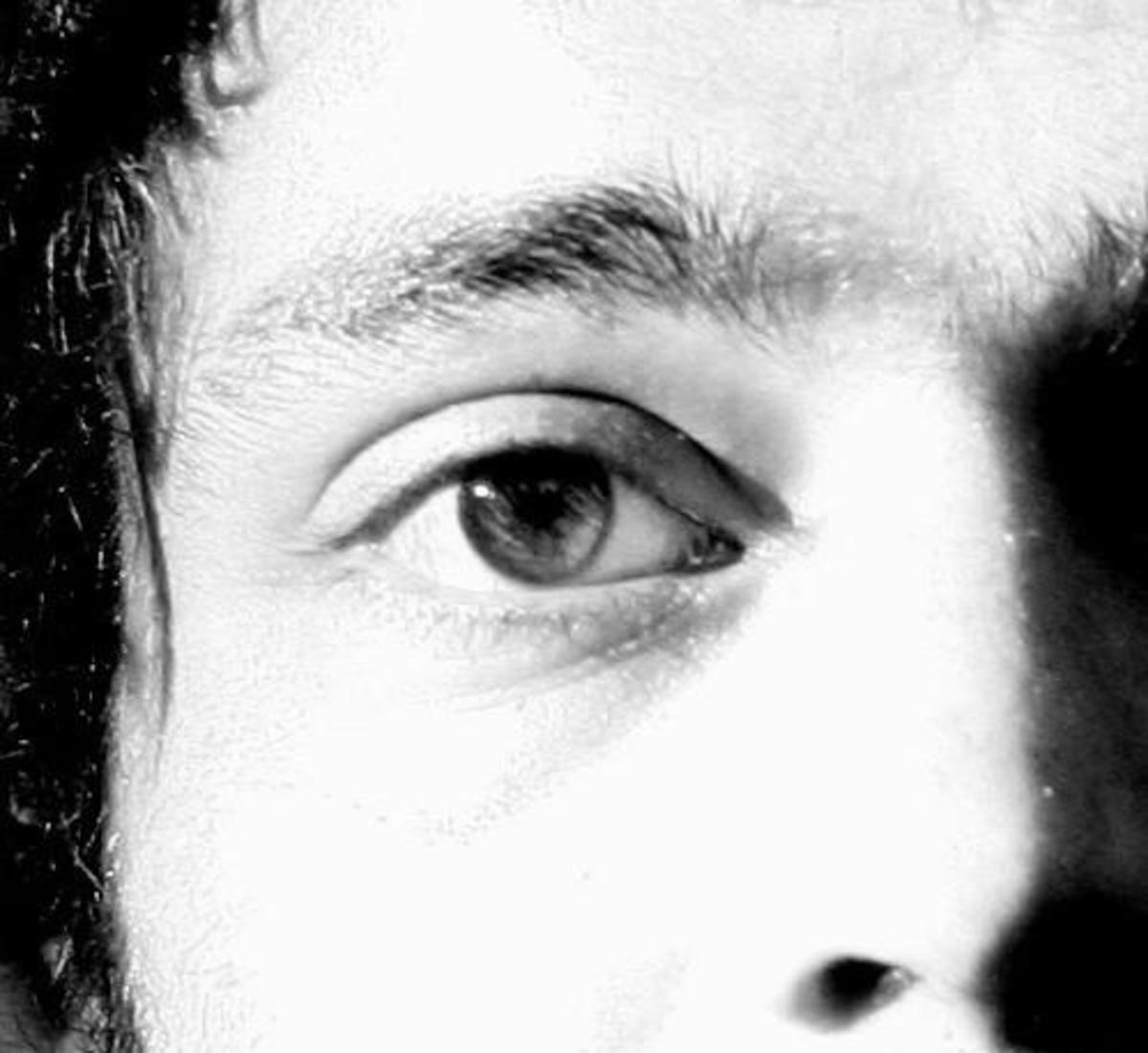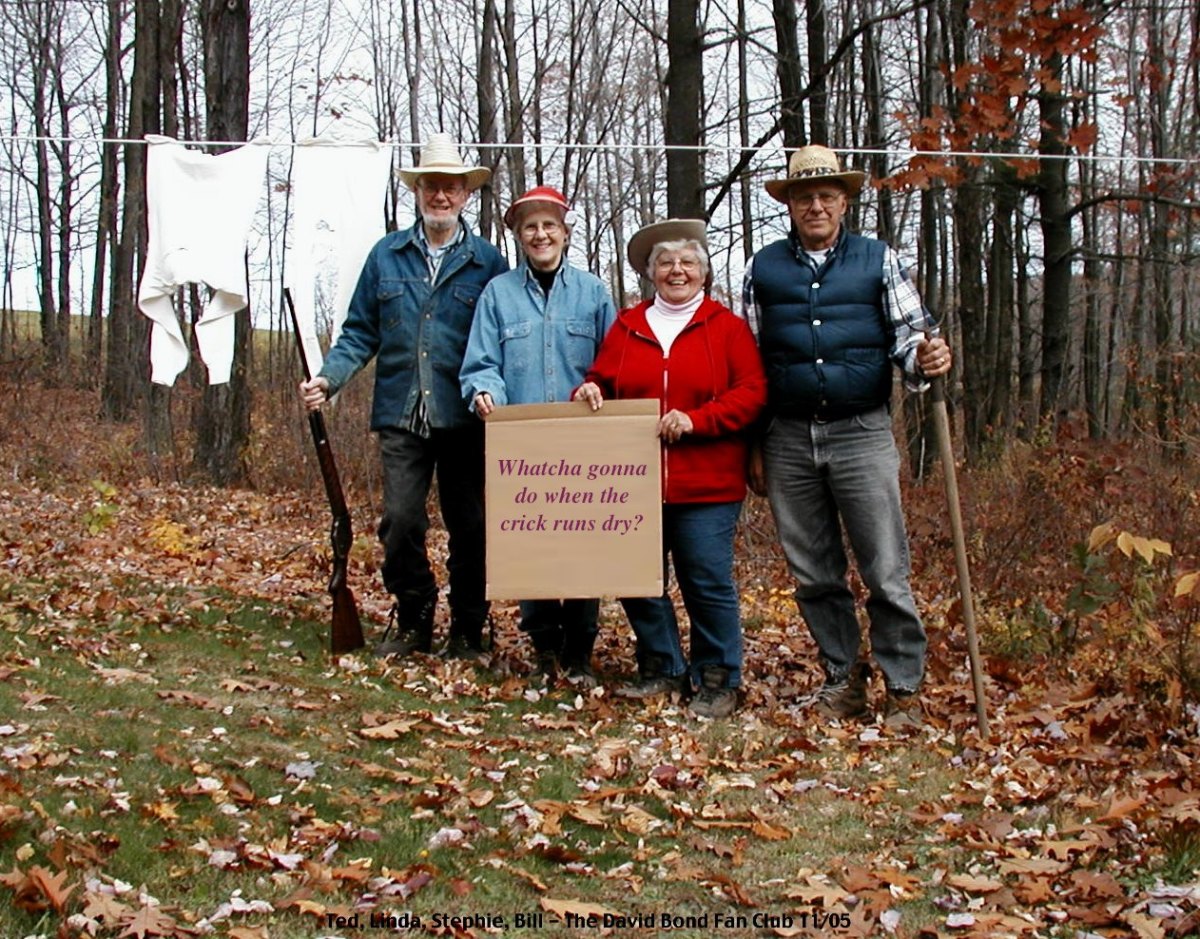How to Organize and Write a Research Experiment Paper

My Perspective
We will make our subject Shyness. I find this subject to be particularly interesting to learn more about. Many have this type of personality and some suffer from shyness, this does not exclude adults. I too as a child and well into my teens was shy. This hindered me in many ways but at the same time also revealed things to me about myself and served as a mechanism in my life. Even though I was too shy to do things, others my age were engaging or having fun doing. I did however learn how to be alone with myself many found that hard. In addition, I was not experiencing the great influence of peer pressure they were. It also showed me how strong I was against peer and media pressure. I found the beauty in writing and solitude.
Research Experiment Outline
I. Participants
a. Adolescents
b. Parent(s)
II. Materials
a. Permission for Research Form
b. Assessment
c. Questionnaire
I. Procedure
a. Tracking Observation
b. Informal Observation
II. Results
a. Collected Data
b. Dates
c. Participant Flow
III. Discussion
a. Evaluation of Implications
b. Inferences
c. Conclusions

Abstract
*The abstract page should be in block paragragh
Certainly, shyness can control people and make them ineffective in classroom, social and business situations. Despite all this shyness has went underdetermined. There have been many pronounced solutions such as drug and/or counseling for therapeutic treatment, such drugs as anti-depressants, deemed a means to an end of shyness. Whereas other notable contributors on this topic argue that counseling is best. We should learn from the Bible scriptures to not go by what the world sees as a weakness in our individual personalities but to have total faith in Jesus Christ, walk in the Holy Spirit, and abide by what he reveals to each of us. Through researching this topic by directly observing adolescents and conducting assessments, implementing questionnaires and gathering information on the participant’s elements, which has the high possibility of great influential value in their upbringing, can provide the evidence that the topic of shyness is in need of further study.
Introduction
The development of adolescence is complex and simplistic as it pertains to the dimensions. One developmental aspect I will discuss is shyness. This trait is common and natural to all but there is a point where it came start to become unhealthy. During the adolescent years many developmental setbacks can occur, causing security and emotional underdevelopment resulting in shyness. Shyness brings on feelings of reservation, awkwardness, or lack confidence. I will attempt to uncover the origin of issue, provide statistics, facts, possible solutions, and reiterate the Christian worldview pertaining to the topic of shyness.
Despite the knowledge acquired by psychologists, notable authors, and researchers, the fact remains that there is more to learn from the connection between how shyness contributes to adolescence personality. According to Dr. Carl Schwartz of Harvard Medical School, shyness stems from two contributions, biological and genetic influences, in short the amygdale. These factors greatly affect the adolescence personality. ScienceNetlinks reports that amygdale is the part of the brain that works in an extraordinary way when using the senses to process. When the amygdale receives new or strange information the next step is to send it to another part of the brain for further processing (Hirshon).
In a recent research study, participants observed from childhood to adolescence by Dr. Schwartz where he conducted a “longitudinal study” on young adults that exhibited shyness as a toddler. Brain scans performed on participants, revealed how these individual’s brain reacted when faced with strangers or unfamiliar situations. These findings showed more activity in the amygdale, which implied that they were more sensitive to new experiences. In addition to this finding, the high sensitivity may be the reason for shyness during adolescent years.Schwartz predicted, that a shy child does not necessarily constitute a shy adult(Hirshon). However, he did express not having sufficient subjects that exhibited a high social phobia. This particular study covered their social trends as well as progression of medical conditions. The participants were in two categories, “novelty-seekers”, welcoming new experiences and interaction with their surroundings, and the other, were comfortable in familiar. When the participants reached age thirteen, the one category of introverted personalities showed more social anxiety behavior as opposed to the category of novelty-seekers.

There have been many pronounced solutions such as drug and/or counseling for therapeutic treatment, such drugs as anti-depressants, deemed a means to an end of shyness. Whereas other notable contributors on this topic argue that counseling is best. Counseling offers the adolescent to venture into new environments and to make positive inferences pertaining to internal dialogue and social relations (Association).
Kessler adds, when you have a shy child provide them with patience and introduce words or ideas to help with new, hard to adapt environments and situations. Be knowledgeable in where the child fits in on the scale but find comfort that it will subside (Newman, 2008). To add to Kessler’s solution to shyness according to the APA it is with the assistance of caregivers, mentors and psychologist. They can help by maintaining appropriate expectations by utilizing such actions as, role play challenge situations with the shy person, avoid negative labels, intense pressures for social performance remember that shyness and social anxiety are common and universal experiences at all ages for most people, and group therapy sessions.

In a more recent article on shyness, Shyness: The New Solution, was published by Bernardo Carducci in Psychology Today, suggests that shyness is not a bad thing to be. He insists that shyness is growing and new research revealed new findings. Carducci conducted a survey and concluded that there is no needed concern for a child that is shy, despite the lack of social skills in classroom, social or business environments, there is a solution for even the extreme shy child and that is to accept that it is simply a part an individual personality (Carducci, 2000).
The Christian worldview tells us in Philippians 4:6-9 “Do not be anxious about anything, but in everything by prayer and supplication with thanksgiving let your requests be made known to God. And the peace of God, which surpasses all understanding, will guard your hearts and your minds in Christ Jesus.” We should learn from this scripture not to go by what the world sees as a weakness in our individual personalities but to have total faith in Jesus Christ, walk in the Holy Spirit, and abide by what he reveals to each of us. We are to lean on the Lord for wisdom and understanding for the proper and needed change to occur.
Shyness is an emotion that all human kind experience but also is an additional hindrance we acquired due to the separation and “fall” between man and God. Much like anxiety or low self-esteem, we can be delivered from that with God’s help, prayer, repentance, and abiding in God’s will. “God wants us to be the kind of citizens in the world who will draw the attention of the world. We need to be different. We need to have the qualities of salt and light (Matt. 5:13-16) (MacArthur, 1977)”.
Method
Participants
The 6th grade class made-up of 11 students, g=5 and b=6, all ranging from ages 11-12. The number of parents involved in the research were four, g=2 and b=2. The chosen student participants were recruited by voluntarily agreeing to participate in this experiment, their part being the questionnaire. The other participants, the parents, were recruited by informational material mailed out by the school concerning the upcoming research experiment. The parents signed permission of research form after reading over the information and questionnaire questions and possible outcomes; this granted me the choice of many classes. The student participants were compensated with awards of appreciation and the parents were provided the results along with an evaluation that could be used to seek further guidance to improve their child’s overall performance.

Materials & Procedure
The assessment used during the research experiment was adapted from the Social Phobia and Anxiety Inventory for Children (SPAI-C). The scale used in constructing the results was the Liebowitz Social Anxiety Scale for Children and Adolescents (LSAS-CA). There were 26 questions with the completion time of twenty to thirty minutes. The questions were numbered and in individual columns on white paper with light blue colored background on every other column, preceding the questions were the boxes in which to check mark.
Entering Burgundy College Preparatory School I notice there are classes already in session. As I walk down the hall, glancing through the window to see what the class appeared to be doing. I quickly chose the class in which to observe and conduct an experiment on. This observation will allow me to see which students exude a level of shyness. When looking at shyness as a behavioral issue, there is cause for caution when labeling an individual shy or on the other hand, as an introverted personality. To not confuse this issue, I will incorporate tracking and informal observation and a questionnaire for each of the four students I chose, along with their parents. The questionnaire will consist of twenty-six questions for the students. After acquiring the signatures from the parents to conduct such an experiment, the next step would be to have the parents to pre-fill the questionnaire made for them. The class will be observed over a period of three weeks without them being aware.
On the subject of introvert vs. shyness, one contrast between the two can be found in an Lynne Henderson and Philip Zimbardo presents facts that defines shyness as an feeling of discomfort that can accompany apprehension with interpersonal situations, affecting the individual’s human need of socializing, interacting, and reaching goals. It manifests itself through the preoccupation with inner dialogue, feelings and reactions (Zimbardo, 2008).
Another difference between shyness and introverts is that shyness, recorded as having the capacity to occur on the levels of cognitive, physiological, or behavioral. Whereas introverts enjoy solitude to social activities, however, do not harbor fear of social encounters as do the shy, at the same time as extroverts finding enjoyment in social to solitary activities. The questionnaire will provide me with insight on cognitive and behavioral affects along with the physical complaints, therefore having a having or not having a connection with shyness.

Results
Analyses centered on the participant’s possible social phobia-shyness. This allowed me to examine the fear, anxiety, avoidance, and social fears related to school activities and behavior. The results showed that there was a connection between social phobias and behavior. Each question was able to be assessed using the LSAS-CA. It was found that 3 out of 4 of the students, two girls and one boy all the same ages exhibited a level of shyness were indeed suffering from a social phobia. Whereas the one student that was set apart from the other three, an eleven-year-old girl, showed an introverted personality. The three participants that showed highs scores in the following fear of social interactions fear of performance, avoidance of social interaction and avoidance of performance were labeled as having the social phobia commonly referred to as shy. The scale used ranged from fear or anxiety 0=none, 1=mild, 2=moderate, 3=severe, and/or avoidance, 0= never (0%), 1= occasionally (91-33%), 2=often (33-67%), 3=usually (67-100%).
Discussion
Shyness is a behavior in one’s personality, researched for many years and still has been a topic of new discovers. Many notable authors have conducted continual studies on the matter of shyness and when it is mixed with the how it works in adolescents, you have a more complex dimension. Adolescent development is very convoluted and misunderstood by scholars. The adolescent has trouble understanding self along with all the factors that surround the shaping of personalities.
The adolescents that were shown to be shy can benefit from counseling that is focused on social fears with its learning goal being that of fulfillment of social interactions, performance, and increase in positive behavior. As we experience adolescence and gain knowledge of the factors that make up their every so changing bodies and moods. Along with that clarity, we should never lessen, all that the adolescent needs to know about God’s will and His laws for humankind. Even though in this stage of life there can be hormonal changes that affect the mood and decisions, discipline is crucial and what God intends for us is what should be.

Liebowitz Social Anxiety Scale
Pt Name: Pt ID #:
Date: Clinic #: Assessment point:
Fear or Anxiety Avoidance:
0 = None 0= Never (0%)
1 = Mild 1= Occasionally (1—33%)
2 = Moderate 2= Often (33—67%)
3 = Severe 3= Usually (67—100%)
Questions
Fear or Anxiety or Avoidance
1. Telephoning in public. (P) 1.
2. Participating in small groups. (P) 2.
3. Eating in public places. (P) 3.
4. Drinking with others in public places. (P) 4.
5. Talking to people in authority. (S) 5.
6. Acting, performing or giving a talk in front of an audience. (P) 6.
7. Going to a party. (S) 7.
8. Working while being observed. (P) 8.
9. Writing while being observed. (P) 9.
10. Calling someone you don’t know very well. (S) 10.
11. Talking with people you don’t know very well. (S) 11.
12. Meeting strangers. (S) 12.
13. Urinating in a public bathroom. (P) 13.
14. Entering a room when others are already seated. (P) 14.
15. Being the center of attention. (S) 15.
16. Speaking up at a meeting. (P) 16.
17. Taking a test. (P) 17.
18. Expressing a disagreement or disapproval to people you don’t
know very well. (S)
19. Looking at people you don’t know very well in the eyes. (S) 19.
20. Giving a report to a group. (P) 20.
21. Trying to pick up someone. (P) 21.
22. Returning goods to a store. (S) 22.
23. Giving a party. (S) 23.
24. Resisting a high pressure salesperson. (S)
References
*The reference page should be aligned left, APA or MLA (whichever your instructor requires), hanging indentions, and no spacing.
Association, A. P. (n.d.). Painful shyness for children and adults. American Pyschological Association , 6.
Carducci, B. (2000). Shyness: The New Solution. Psychology Today .
Department of Psychiatry at Massachusetts General Hospital . (2010). Social Phobia: Social Anxiety.
Hirshon, B. (n.d.). Shyness. Science Netlinks .
International, T. G. (1978). Holy Bible. Nashville: National Publishing Company.
MacArthur, J. (1977). Found: God's Will.
Newman, S. (2008). Shyness: A Mental Disorder or Personality Quirk? Psychology Today .
Shaughnessy, Zechmeister & Zechmeister. (2012). Research Methods in Psychology.
Zimbardo, L.H. (2008). Social Fitness: Encyclopedia of Mental Health








